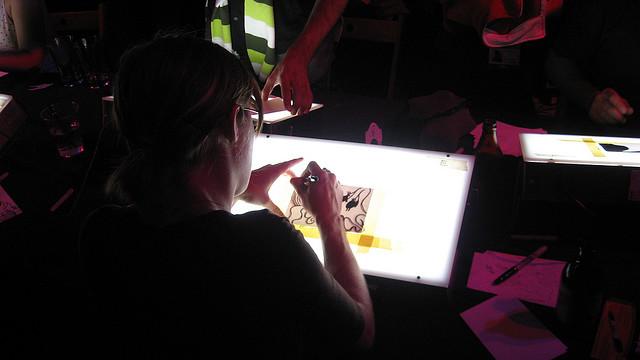Way back in 1999 there were roughly 108 million people consuming coffee in the United States alone.
The average coffee drinker back in the last bit of the 90s was spending, on average, $164 and 71 every year on coffee alone. Entering the year 2000, more than 79% of all Americans drank coffee either every single day or at least occasionally.
But you don't want to read any of that.
Even if you do find the numbers interesting, the data can start to pile up fast. If you're a coffee manufacturer or a small cafe in a large city, the numbers can do wonders for your potential customers. Numbers make you look legitimate. Numbers help you appear like you know what you're doing (79% of people drink coffee, we can't be wrong).
But numbers can also be misleading, and when there are enough zeros behind a number that using two hands to count them all is required, you start losing customers.
Enter the infographic
Even before there was Photoshop and online statistics reporting and analytical tracking implemented into nearly everything in the world, infographics were hot. Today, infographics are everywhere.
The gist of an infographic is that it either conveys a lot of important information, or a lot of really interesting facts your audience didn't know they wanted to know, in an easy to read sort of way.
Ready to catch up on the Tour de France? I actually helped put together an infographic for that recently. Want to know how many American households are just like yours? The New York Times has an interactive infographic for such a thing. There's even an infographic that shows how obsessed we all are with Facebook.
But how do you create an infographic, and what do you do even if you successfully make one?
Like all big online projects: baby steps.
8 Essential Steps To Creating & Marketing An Infographic
1. Find something worth making an infographic about. It can't be hard, as just about anything can be spun to be interesting enough for an infographic.
2. Gather the statistics you want to represent in your graphic. The more data you have, the better. Nobody wants to see a generic number that they can Google for themselves. You need to have as much statistical data as you possibly can. Throw in a few really interesting tidbits too.
3. Hire a designer, or start sketching out designs yourself. Some infographics look like they're from the Star Trek universe, others are quirky and illustrated for fun. Your graphic should tailor to your audience. For example: if you're doing an infographic on My Little Pony, illustrations and colorful imagery will work better than black and white World War 2 photos. You get it.
4. Now the hard part: putting the design together. There are a number of companies and freelance designers out there that can help you put together your infographic. Whichever route you decide to take, make sure that you are putting all of the time into the design that it requires. You don't want to rush something like this, especially when anyone else could quickly throw something together themselves.
5. Once you have an infographic, be sure to put your website URL on there somewhere, so you can get credit when other people link to it or embed it in their blog or their website (don't worry, you want people to steal your graphic, that's part of the fun). Just don't make your logo or URL take up an entire corner of the graphic. Keep it subtle and classy.
6. Once your design is ready to go and you have the infographic hosted on your own website, throw a few social media buttons and a simple code to "embed the infographic" for users who want to literally steal it from you. You can see an example of the layout I used for sharing and embed codes on this Tour de France infographic page.
7. Now that your graphic is hosted and there are ways for visitors to share or copy an embed code, you need to reach out to anyone who might be interested in the data you're representing. Bloggers who regularly blog about what you've designed will definitely be interested. Sites like Mashable and Fast Company regularly feature good infographics too. Contact friends and family, co-workers, and acquaintances. People like infographics and will likely be willing to share a fun and interesting one if you ask nicely.
8. Profit. No, just kidding. But I'm sure there's a way you could profit from an infographic if you're clever. And you are clever, because you read Search Engine People.
Really that's all there is to it. The hardest part of designing an infographic is undoubtedly gathering the data (though a quick Google search can make that easier, try things like "[target keyword] statistics").
Even if you aren't a designer or don't have a budget to hire a designer, you can always use good old fashioned paper and pen to draw a graphic. Or get really creative and use the world around you to create a real life infographic.
Whatever it is you're trying to show with data, an infographic makes it easy and often fun for your audience to consume. You'll look badass for knowing so much about the data, and you'll undoubtedly gain at least a little bit exposure for putting something together.
So go get started. What are you waiting for?


